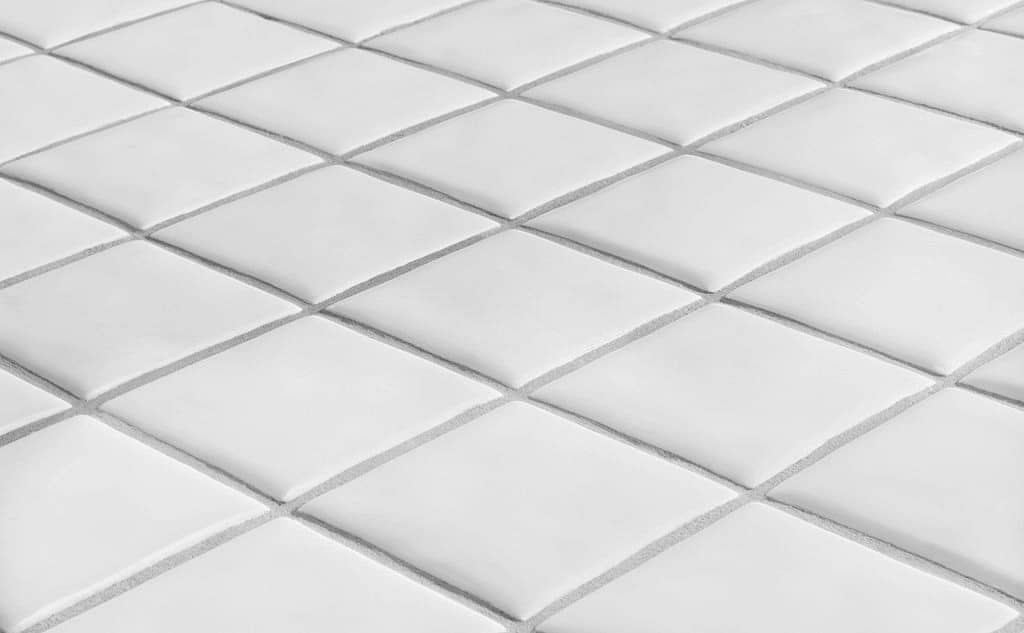Generally, wall tiles are too fragile for use on the floor, they aren’t water-resistant or they may be even more slippery. On the contrary, a floor tile can be used as a wall tile as long as the wall can bear the weight of the tile.
In most cases, you can’t use wall tiles on the floor. Wall tiles aren’t appropriate for use on the floor, they aren’t designed to withstand pressure from foot traffic.
Although it isn’t recommended, you can use wall tiles on the floor but ensure it is been used in low traffic areas.
So let’s say you have this beautiful looking tile on your bathroom wall and you in search of a floor tile that matches with your bathroom wall tile, such search for a perfect tile might seem like an impossible task.
Read: Do steam mops damage tile floors
Difference Between Wall and Floor Tiles
Table of Contents
Appearance
When it comes to the appearance of a wall tile vs a floor tile, there’s no much difference in the appearance ceramic. Stylishly, the wall tile is smaller compared to the floor tile. Wall tiles are smaller and light-weighted, making it difficult to install it on vertical surfaces.
Wall tiles are also very slippery and can be dangerous when used on the floor, floor tiles aren’t as slippery as wall tiles. You can check out some wall tile design ideas.
Maintenance and Durability
Both floor and wall tiles are maintained equally, they are both cleaned with soap and water. When grout cracks or become discolored, they should be replaced, this can be done once in a few years.
Floor and wall tiles are durable when used in their designated places. Floor tiles are built to be strong and withstand pressure from foot traffic while wall tiles are lighter, it loses its durability when used on the floor.
Why Tile Floors
When it comes to flooring, a tile floor is the best option. It’s sometimes cheaper than hardwood floors depending on the type of tile chosen. Before going for a tile, ensure to take a look at its properties. Choose tiles with minimum tear for the long-haul and tiles that offer maximum safety.
Floor Tiles are made from ceramic, stone or porcelain. They are classified according to their strength by an independent rating system. This helps you choose tiles that can be used on the wall or the floor.
Group 0: These tiles are only suitable for walls as they are very light., they are unrated.
Group I: A slight harsh treatment can cause a scratch on these tiles. They are only suitable for areas with light traffic and where shoes aren’t likely to be used.
Group II: This is used in areas of the home that doesn’t have much abrasive materials, a good example is the living room and the bathroom. These areas aren’t exposed to the highest level of traffic.
Group III: Suitable for residential areas or light commercial areas where abrasive dirt isn’t in excess.
Group IV: Use in areas where there may be significant traffic such as hotel rooms, showrooms and exhibition areas.
Group V: Used in areas with heavy traffic such as shopping centers, hotels, and industrial workplaces. This is the most expensive of all tiles in other categories.
Conclusion
Using wall tiles on the floor isn’t advisable but if you insist, this must be done in areas with very low traffic.
Keep in mind, there are a lot of disadvantages attached to it. Water spillage can be very slippery and dangerous as well as wall tiles aren’t at all durable on the floor.
That said, before considering using a wall tile on the floor, there are a lot of floor tiles out there and you will definitely find the design that suits your floor.

